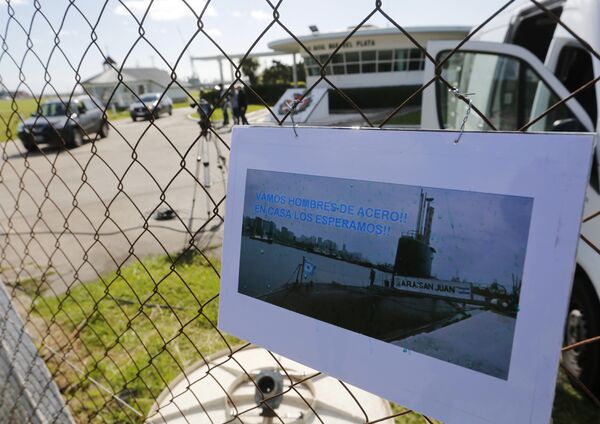On Monday, Argentina’s navy said that the noises which they hoped were coming from tools being banged against the hull of a submarine in Morse code signals have been analyzed.
Experts determined that the sounds, which were heard in the South Atlantic about 360 kilometers (220 miles) from the Argentine coast at a depth of about 200 meters (650 feet) hadn't come from its missing submarine but rather from some "biological" source.

"The sounds are not from the submarine and do not correspond to a pattern that could be interpreted as Morse code," Navy spokesman Enrique Balbi told reporters on Monday.
He also noted that the search operation, which has been going on for five days already, has entered a "critical phase" due to a probable limit of oxygen onboard. Although the submarine has enough food and fuel to last for 90 days and enough oxygen for 30 days on the surface, it only had enough oxygen to survive for seven days if submerged. Given that five days have passed since it went missing, there are now only two days left to locate it. The rough conditions on the surface suggest that it has been traveling underwater.

The navy said that its last communication with the San Juan sub with 44 crew members on board was on Wednesday, when it surfaced to report a mechanical breakdown related to its batteries. It was therefore asked to change course and go to the naval base in Mar del Plata.
"This phase is critical," said Balbi. The submarine "should have arrived in Mar del Plata on Sunday or relayed Monday if the problem had only been a communications breakdown."
He also commented on the reports that the navy had detected seven satellite calls from the missing vessel on Saturday morning, saying that they turned out to be from another ship broadcasting on the same frequency employed by the sub.




